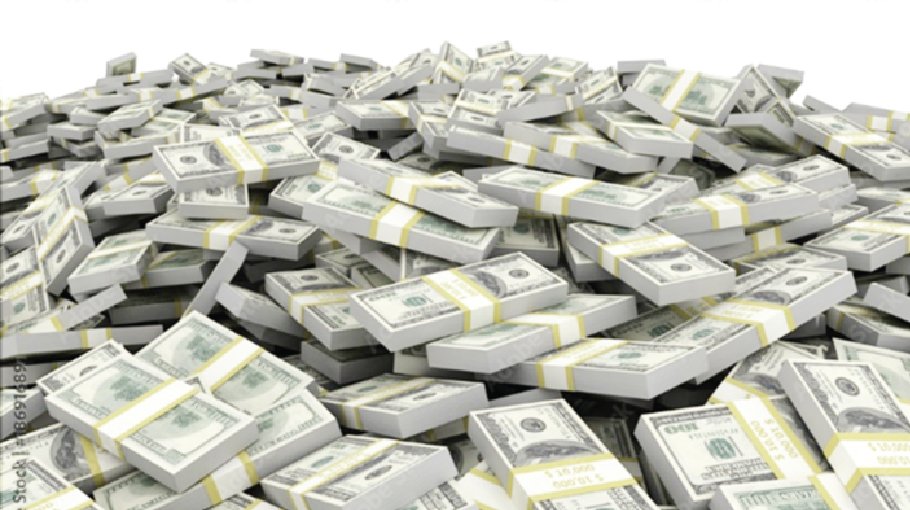If America is in trouble, why do foreigners keep buying US assets?

Jamie McGeever
Is the U.S. economic outlook so weak that it warrants multiple interest rate cuts? Or are U.S. markets pulling in huge inflows from abroad because the country's outlook is so attractive?
Both can't be right, yet those are the respective narratives indicated by current pricing in the rates market and the latest capital flows data. Something doesn't quite add up.
Much has been written this year about how foreign investors – spooked by U.S. President Donald Trump's unorthodox, populist policies – were going to reduce their exposure to U.S. markets and deploy that capital elsewhere.
But that's not how it is panning out.
Treasury International Capital (TIC) figures last week showed that foreign investors bought a net $192 billion of U.S. securities in June. This followed a record net purchase of $326 billion in May, swelled by the largest ever inflow from the private sector.
Once U.S. investors' purchases of foreign assets are discounted, the net flow of long-term capital into U.S. securities in June was still a healthy $151 billion, taking the total for the second quarter to a record-matching $410 billion.
Zooming out a little further, net inflows in the first half of this year stood at $643 billion, on course to match the record $1.3 trillion net inflow from 2022. And in the 12 months through June, a net $1.27 trillion was poured into U.S. stocks, Treasuries, agency and corporate debt.
The end of American exceptionalism? It sure doesn't look like it.
DE-DOLLARIZATION, WHERE ART THOU?
Overseas demand for U.S. assets is clearly strong on an aggregate level. The explanation may be quite simple: capital continues to flood into the U.S. because that is where investors around the world believe they will see the strongest growth and thus earn the highest returns.
"The flows picture is remarkably robust," says Robin Brooks, senior fellow at the Brookings Institution in Washington. "I don't think you can tell a 'de-dollarization' story or 'end of U.S. exceptionalism' story from these inflows."
True, there is some justification for the de-dollarization narrative. The greenback is down 10% year to date, having recorded its worst start to a year in over half a century.
But most of that slump was in the January-April period. In the last four months, the dollar index has been essentially flat.

At the Jackson Hole Economic Symposium on Friday, Powell signaled that he was open to the idea of lowering interest rates.
The dollar's weakness despite the influx of global capital certainly is a head-scratcher. Anecdotal evidence suggests this move partly reflects foreigners hedging more of their U.S. exposure, via currency options and derivatives. Short-term moves based on a dovish Fed outlook may be at play too.
ULTIMATE HEAD-SCRATCHER
But perhaps an even bigger head-scratcher is the disconnect between Fed expectations, the U.S. growth outlook, and capital flows.
Traders expect the Fed to cut rates by around 125 basis points by the end of next year. That is, by far, the most dovish expectation for any G10 central bank. History suggests easing on this scale would only occur if there were a pretty sharp slowdown in economic growth.
True, there are some red flags in the labor market, parts of 'Main Street' and U.S. public finances, even before factoring in tariff uncertainty. Yet, overall, the U.S. economy appears to be in reasonably decent shape. Economists at S&P Global Market Intelligence on Wednesday raised their 2025 and 2026 GDP growth forecasts to 1.7% and 2.4%, respectively.
Is that an economy in need of six quarter-percentage point rate cuts over the coming 16 months, or is the growth outlook relatively rosy precisely because that level of monetary loosening is expected?
That remains to be seen. For now, investors around the world continue to hoover up U.S. securities, which suggests they can't be all that pessimistic about the U.S. – or at least U.S. tech companies.
It's worth noting that the TIC data showed the large inflows in May and June were mostly in so-called riskier equities rather than 'safer' Treasuries, suggesting foreigners may be more sanguine about Corporate America than the government.
The end of U.S. exceptionalism may be around the corner, but it's a long bend.
(Jamie McGeever has been a financial journalist since 1998, reporting from Brazil, Spain, New York, London, and now back in the US again. His experience and expertise are in global markets, economics, policy, and investment. Jamie's roles across text and TV have included reporter, editor, and columnist, and he has covered key events and policymakers in several cities around the world.)



